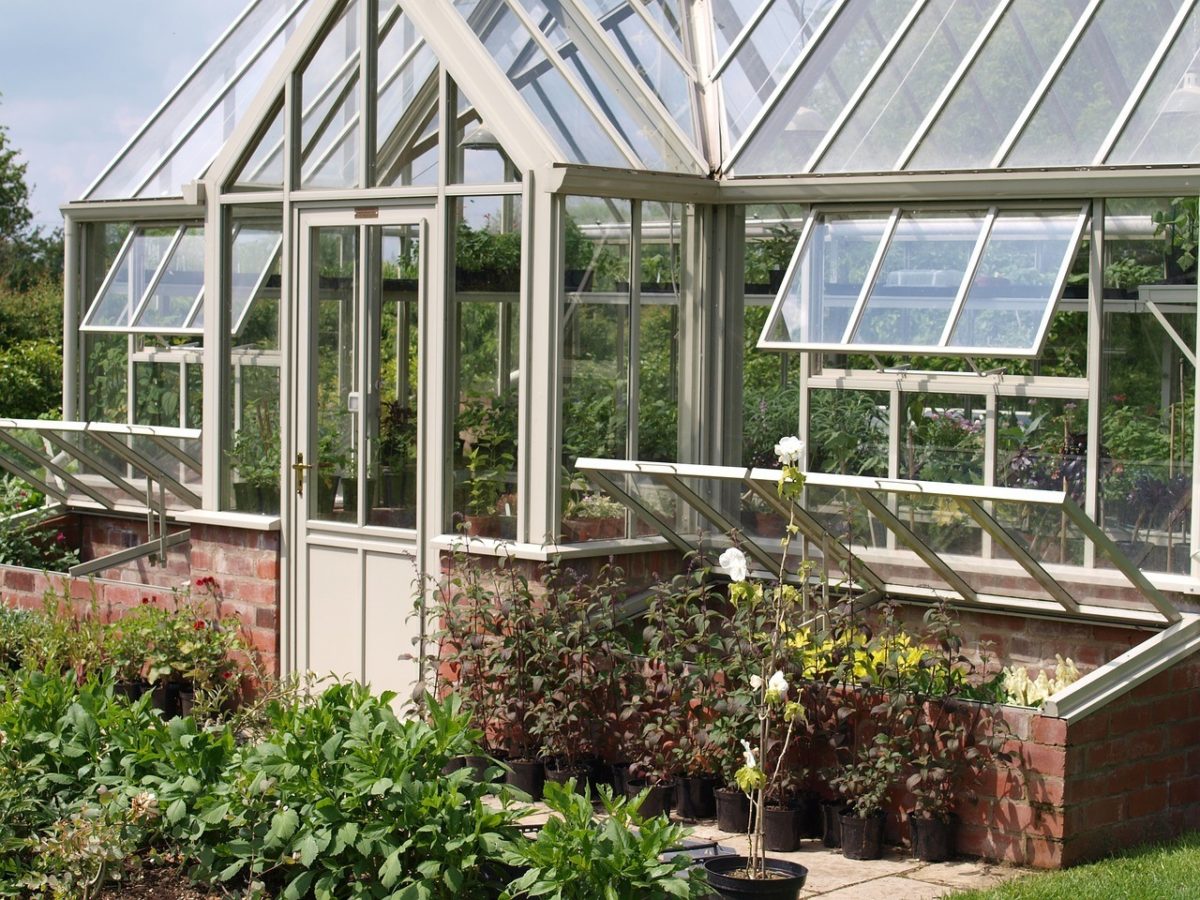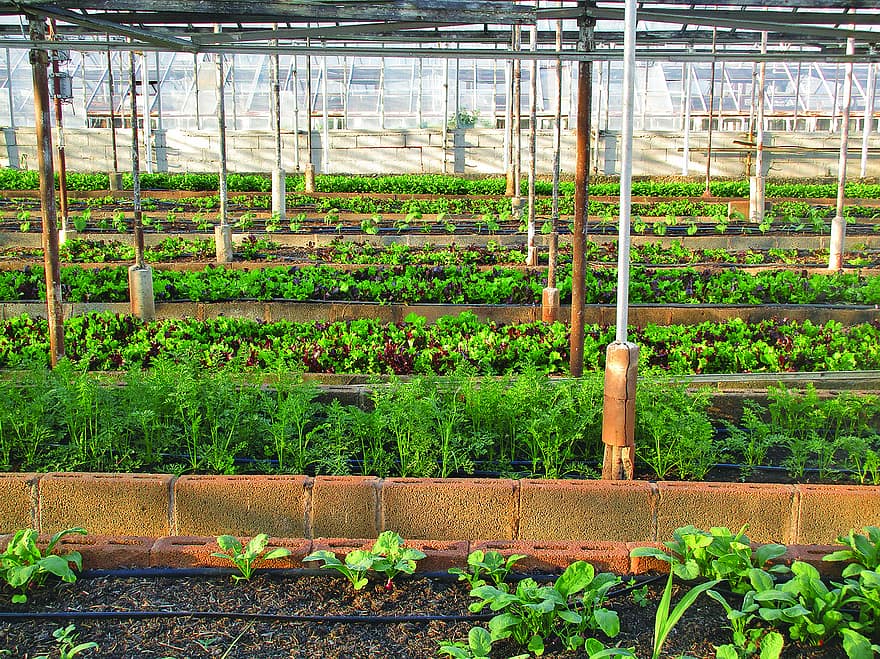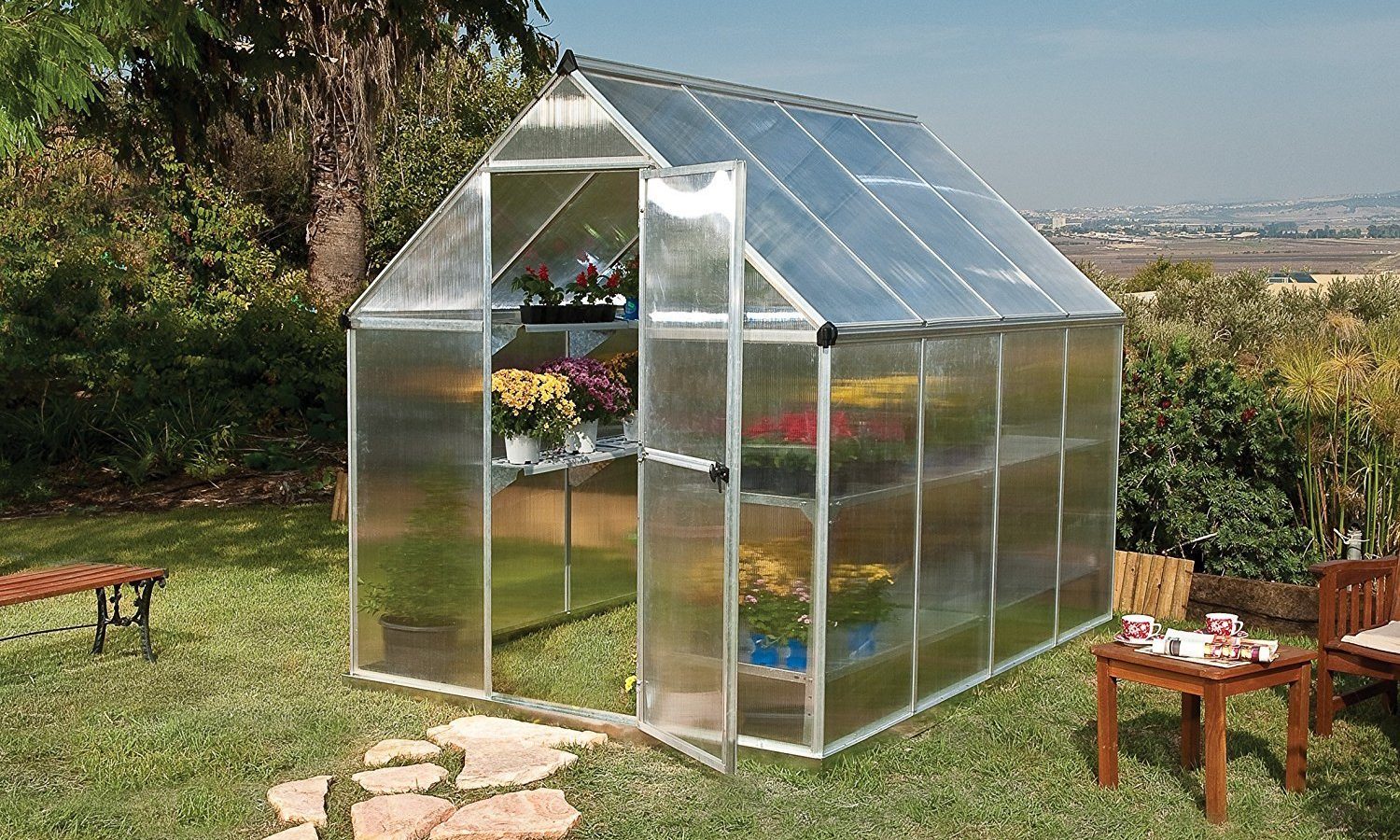The Advantages of Growing Vegetables Year-Round in a Greenhouse
Growing vegetables year-round in a greenhouse offers numerous benefits for both home gardeners and commercial producers. With the ability to control the environment, greenhouse gardening allows for an extended growing season, increased food production, and reduced dependence on imported produce. These advantages can lead to a more sustainable and self-sufficient lifestyle, as well as potential financial gains for those who can successfully grow and sell their year-round produce.
One of the primary benefits of year-round greenhouse gardening is the ability to extend the growing season. In many regions, outdoor growing seasons are limited by cold temperatures and short daylight hours during the winter months. By providing a controlled environment, greenhouses enable gardeners to grow vegetables throughout the year, regardless of external conditions. This extension can result in a significant increase in the overall yield of vegetables, as well as a more consistent supply of fresh produce.
In addition to increased yield and consistency, year-round greenhouse gardening can also lead to a reduction in the dependence on imported produce. Many areas rely on imported vegetables during the off-season, which can be costly and environmentally unfriendly due to transportation emissions. By growing vegetables year-round in a greenhouse, gardeners can help to reduce this dependence and support local food systems. This can lead to a more sustainable and self-sufficient lifestyle, as well as a stronger connection to the food being grown and consumed.
Finally, year-round greenhouse gardening can provide potential financial gains for those who can successfully grow and sell their produce. With an extended growing season and increased yield, greenhouse gardeners may be able to supply fresh vegetables to local markets, restaurants, and consumers throughout the year. This can create a valuable niche in the local food system and provide a source of income for the gardener. However, it is important to note that successful year-round greenhouse gardening requires careful planning, management, and investment in order to achieve these financial gains.
Selecting Suitable Vegetables for Year-Round Greenhouse Gardening
When it comes to growing vegetables year-round in a greenhouse, not all crops are created equal. Some vegetables are better suited to cooler temperatures, while others thrive in warmer conditions. By selecting the right types of vegetables for your year-round greenhouse gardening, you can maximize your yield and ensure a consistent supply of fresh produce.
Cool-season crops are vegetables that prefer lower temperatures and shorter days, making them ideal for growing during the fall, winter, and early spring months. Examples of cool-season crops include lettuce, spinach, broccoli, cauliflower, and peas. These vegetables can tolerate frost and low temperatures, and can often be grown in unheated greenhouses during the winter months. However, it is important to note that cool-season crops may require additional light and nutrients in order to thrive in a year-round greenhouse environment.
Warm-season crops, on the other hand, prefer higher temperatures and longer days, making them ideal for growing during the spring, summer, and early fall months. Examples of warm-season crops include tomatoes, peppers, eggplants, cucumbers, and squash. These vegetables require warmer temperatures and more light in order to grow, and may require heating and additional light sources in a year-round greenhouse environment. It is important to note that warm-season crops are generally more sensitive to frost and low temperatures, and may require protection from these conditions in a year-round greenhouse.
In addition to cool- and warm-season crops, there are also vegetables that can be grown year-round in a greenhouse, regardless of temperature. These vegetables, known as “hardy” or “half-hardy” crops, include vegetables such as kale, chard, beets, carrots, and radishes. These vegetables can tolerate a wide range of temperatures and light conditions, making them ideal for year-round greenhouse gardening. However, it is important to note that even hardy crops may require additional care and attention in a year-round greenhouse environment in order to thrive.
Creating the Ideal Greenhouse Environment for Year-Round Vegetable Growth
In order to successfully grow vegetables year-round in a greenhouse, it is essential to create and maintain the ideal environment for plant growth. This includes controlling temperature, humidity, and light, as well as providing adequate ventilation and irrigation. By carefully managing these conditions, you can ensure that your vegetables have the best possible chance of thriving in a year-round greenhouse environment.
Temperature control is one of the most important aspects of year-round greenhouse gardening. Different vegetables have different temperature requirements, so it is important to research the specific needs of the crops you are growing. In general, most vegetables prefer temperatures between 65-85°F (18-29°C) during the day and slightly cooler temperatures at night. To maintain these temperatures, you may need to use heating and cooling systems, such as space heaters, fans, or air conditioning units. It is also important to insulate your greenhouse to prevent heat loss and to use shading systems to prevent overheating during the summer months.
Humidity control is another important factor in year-round greenhouse gardening. Different vegetables have different humidity requirements, so it is important to research the specific needs of the crops you are growing. In general, most vegetables prefer moderate to high humidity levels, between 50-70%. To maintain these humidity levels, you may need to use humidifiers or dehumidifiers, as well as misting systems or foggers. It is also important to ensure that your greenhouse is well-ventilated to prevent the buildup of excess moisture and to prevent the growth of mold and mildew.
Light control is also crucial in a year-round greenhouse environment. Different vegetables have different light requirements, so it is important to research the specific needs of the crops you are growing. In general, most vegetables prefer bright, indirect light, with at least 6-8 hours of sunlight per day. To provide adequate light, you may need to use artificial lighting, such as grow lights or fluorescent lights. It is also important to ensure that your greenhouse is well-ventilated to prevent the buildup of excess heat and to prevent the risk of burning your plants.
Planning and Planting for Continuous Vegetable Production
In order to maximize year-round vegetable production in a greenhouse, it is essential to plan and plant your crops carefully. This includes using proper planting techniques, such as crop rotation and succession planting, as well as utilizing vertical gardening methods to make the most of your available space. By carefully planning and planting your crops, you can ensure a continuous supply of fresh vegetables throughout the year.
Crop rotation is a technique used to prevent the buildup of pests and diseases in the soil, as well as to improve soil fertility and structure. This involves changing the type of crops grown in a particular area from year to year, rather than growing the same crops in the same place year after year. For example, you might follow a rotation of cool-season crops, such as lettuce and spinach, with warm-season crops, such as tomatoes and peppers. This can help to break the life cycle of pests and diseases, as well as to improve soil health and productivity.
Succession planting is another technique used to maximize year-round vegetable production. This involves planting crops in succession, rather than all at once, in order to ensure a continuous supply of fresh vegetables. For example, you might plant a crop of lettuce every two weeks, rather than all at once, in order to ensure a steady supply of fresh lettuce throughout the growing season. This can also help to prevent gluts and shortages, as well as to make the most of your available space.
Vertical gardening is a technique used to make the most of your available space in a year-round greenhouse. This involves growing crops vertically, rather than horizontally, in order to maximize the use of your greenhouse’s walls, floors, and ceilings. For example, you might use hanging baskets, trellises, or vertical gardens to grow crops such as tomatoes, cucumbers, and peas. This can help to increase your overall yield, as well as to make the most of your available space and resources.
Managing Pests and Diseases in a Year-Round Greenhouse Environment
One of the challenges of growing vegetables year-round in a greenhouse is managing pests and diseases. These issues can arise at any time of year, and can quickly spread throughout the greenhouse if not properly controlled. However, with the use of integrated pest management (IPM) strategies and biological controls, it is possible to prevent and manage pests and diseases in a year-round greenhouse environment.
Integrated pest management (IPM) is a holistic approach to pest and disease management that focuses on prevention, monitoring, and control. This involves using a combination of cultural, physical, and chemical methods to manage pests and diseases, rather than relying solely on chemical pesticides. For example, you might use cultural methods such as crop rotation and sanitation, physical methods such as barriers and traps, and chemical methods such as biopesticides and botanical pesticides. By using a combination of these methods, you can effectively manage pests and diseases in a year-round greenhouse environment.
Biological controls are another effective method for managing pests and diseases in a year-round greenhouse. These involve using natural enemies, such as predators, parasites, and pathogens, to control pests and diseases. For example, you might introduce ladybugs to control aphids, or use beneficial nematodes to control root-knot nematodes. By using biological controls, you can effectively manage pests and diseases in a year-round greenhouse environment without relying on chemical pesticides.
Harvesting and Storing Year-Round Greenhouse Vegetables
Harvesting and storing year-round greenhouse vegetables is an important aspect of successful year-round vegetable gardening. Proper harvesting and storage techniques can help to ensure the freshness and quality of your vegetables, as well as to extend their shelf life. By following best practices for harvesting and storing your year-round greenhouse vegetables, you can enjoy fresh, homegrown produce all year long.
When it comes to harvesting year-round greenhouse vegetables, it is important to harvest at the right time. This means harvesting vegetables when they are at their peak of ripeness, but before they begin to decline in quality. For many vegetables, this means harvesting them when they are fully grown, but still firm and crisp. For other vegetables, such as leafy greens, this means harvesting them when they are young and tender. By harvesting vegetables at the right time, you can ensure that they are at their freshest and most flavorful.
Once you have harvested your year-round greenhouse vegetables, it is important to store them properly in order to extend their shelf life. This means storing them in a cool, dry, and well-ventilated area, away from direct sunlight. For many vegetables, this means storing them in the refrigerator, in a crisper drawer or on a shelf. For other vegetables, such as root vegetables, this means storing them in a cool, dark place, such as a basement or root cellar. By storing your year-round greenhouse vegetables properly, you can help to ensure their freshness and quality, as well as to extend their shelf life.
It is also important to handle your year-round greenhouse vegetables properly during harvest and storage. This means handling them gently, without bruising or crushing them. For many vegetables, this means using a sharp knife or pair of scissors to cut them from the plant, rather than pulling them by hand. For other vegetables, such as tomatoes, this means handling them carefully, without squeezing or crushing them. By handling your year-round greenhouse vegetables properly, you can help to ensure their freshness and quality, as well as to extend their shelf life.
Maximizing Energy Efficiency in a Year-Round Greenhouse
Maximizing energy efficiency in a year-round greenhouse is essential for reducing energy costs and ensuring the long-term sustainability of your vegetable gardening operation. By using insulation, passive solar design, and renewable energy sources, you can create a year-round greenhouse environment that is both energy-efficient and productive. Here are some tips for maximizing energy efficiency in a year-round greenhouse:
- Use insulation: Insulation is essential for maintaining a consistent temperature in a year-round greenhouse. By insulating the walls, floor, and ceiling of your greenhouse, you can reduce heat loss and gain, and maintain a more stable temperature. Consider using materials such as bubble wrap, polyethylene film, or rigid foam insulation to insulate your greenhouse.
- Use passive solar design: Passive solar design involves using the sun’s energy to heat your greenhouse, rather than relying on artificial heating sources. By orienting your greenhouse to the south and using materials such as glass or plastic to capture and retain heat, you can create a year-round greenhouse environment that is both energy-efficient and productive. Consider using features such as thermal mass, shading, and natural ventilation to enhance the passive solar design of your greenhouse.
- Use renewable energy sources: Renewable energy sources, such as solar, wind, or geothermal power, can help to reduce your reliance on fossil fuels and reduce your carbon footprint. Consider using renewable energy sources to power your greenhouse, such as solar panels, wind turbines, or geothermal heat pumps. By using renewable energy sources, you can create a year-round greenhouse environment that is both sustainable and productive.
By using insulation, passive solar design, and renewable energy sources, you can maximize energy efficiency in a year-round greenhouse and reduce your energy costs. This will help to ensure the long-term sustainability of your vegetable gardening operation, and allow you to enjoy fresh, homegrown produce all year long.
Incorporating Automation and Technology in a Year-Round Greenhouse
Automation and technology can play a vital role in a year-round greenhouse, helping to optimize growing conditions, reduce labor costs, and increase productivity. By using sensors, climate control systems, and precision agriculture tools, you can create a year-round greenhouse environment that is both efficient and productive. Here are some examples of how automation and technology can be incorporated in a year-round greenhouse:
- Use sensors: Sensors can be used to monitor temperature, humidity, light levels, and other environmental factors in a year-round greenhouse. By using sensors, you can gather real-time data on the conditions in your greenhouse, and make adjustments as needed to optimize growing conditions. Consider using sensors to monitor temperature, humidity, light levels, and other environmental factors in your year-round greenhouse.
- Use climate control systems: Climate control systems can be used to automate the temperature, humidity, and light control in a year-round greenhouse. By using climate control systems, you can create a consistent environment that is optimized for year-round vegetable production. Consider using climate control systems to automate the temperature, humidity, and light control in your year-round greenhouse.
- Use precision agriculture tools: Precision agriculture tools, such as hydroponics, aeroponics, and aquaponics systems, can be used to optimize the growing conditions in a year-round greenhouse. By using precision agriculture tools, you can create a controlled environment that is optimized for year-round vegetable production. Consider using precision agriculture tools, such as hydroponics, aeroponics, or aquaponics systems, to optimize the growing conditions in your year-round greenhouse.
By incorporating automation and technology in a year-round greenhouse, you can create a year-round vegetable production system that is both efficient and productive. This will help to reduce labor costs, optimize growing conditions, and increase productivity, allowing you to enjoy fresh, homegrown produce all year long.




/GettyImages-576798993-af0018703ddc49ab8f34fdd7b8b5798b.jpg)


